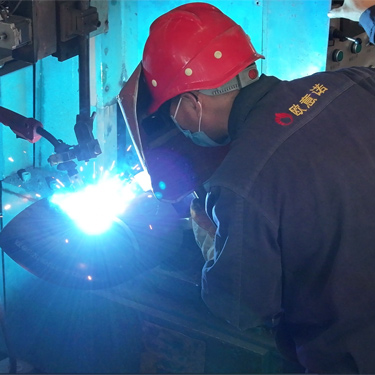
Nov . 08, 2024 18:04
Back to list
صمام تخفيض ضغط الغاز الطبيعي
The Importance of Natural Gas Pressure Reduction Valves
Natural gas is a vital energy source that powers our homes, industries, and vehicles. The safe and efficient delivery of natural gas is crucial, and one of the key components in ensuring that safety is the natural gas pressure reduction valve (PRV). This article explores the significance of PRVs in the natural gas distribution system, their functioning, and their role in safety and efficiency.
Understanding Pressure Reduction Valves
Pressure reduction valves are devices designed to control and reduce the pressure of natural gas during its transmission and distribution. When natural gas is extracted from underground reserves, it is often at high pressure. This high pressure must be reduced to a safer level before the gas reaches consumers. PRVs help maintain the pressure within safe limits, ensuring a consistent supply of gas for various applications without risking overpressure scenarios.
Functioning of Natural Gas PRVs
The functioning of a pressure reduction valve hinges on a simple yet effective mechanism. When high-pressure natural gas enters the PRV, it encounters a diaphragm that moves in response to pressure changes. As the pressure from the incoming gas pushes against the diaphragm, it will either open or close a valve to regulate the flow and pressure of the gas exiting the valve.
Most PRVs operate automatically, adjusting the output pressure based on the demand downstream. This automatic adjustment is critical, especially in dynamic environments where gas demand can fluctuate significantly. By ensuring that the output pressure remains consistent, PRVs prevent damage to appliances and infrastructure that can occur due to pressure fluctuations.
.
The safety features of pressure reduction valves cannot be overstated. High pressure in gas lines poses substantial risks, including potential explosions, gas leaks, and system failures. PRVs are designed not only to reduce pressure but also to protect against sudden overpressure conditions. If the pressure exceeds a predetermined limit, the valve will automatically adjust or close, preventing unsafe conditions.
صمام تخفيض ضغط الغاز الطبيعي

Furthermore, regular maintenance and testing of PRVs are essential to ensure their reliability. Gas companies are mandated to inspect these valves routinely, checking for signs of wear and ensuring that they operate correctly. Through proper maintenance, potential failures can be mitigated, thereby ensuring safe gas delivery.
Efficiency Enhancement
Aside from safety, pressure reduction valves play a significant role in enhancing the overall efficiency of natural gas distribution systems. By regulating pressure effectively, PRVs minimize gas losses and ensure that consumers receive the exact amount of gas they require. Efficient gas regulation leads to optimal combustion, improving the performance of gas appliances and leading to energy savings for consumers.
Moreover, energy companies benefit from reduced operational costs when PRVs are employed effectively. Proper pressure regulation diminishes the risk of on-site leaks and ensures that the natural gas supply chain remains intact, contributing to a more sustainable approach to energy management.
Environmental Considerations
As the world increasingly focuses on environmental sustainability, the efficiency provided by PRVs also helps reduce the overall carbon footprint associated with natural gas use. Efficient gas consumption leads to lower emissions, helping to mitigate the environmental impact of fossil fuel usage. Additionally, reducing the potential for leaks through adequate pressure management further supports environmental protection efforts.
Conclusion
In conclusion, the role of natural gas pressure reduction valves is critical in the safe and efficient distribution of natural gas. Their functionality not only prevents hazardous situations associated with high-pressure gas but also enhances efficiency, leading to economic and environmental benefits. As the demand for natural gas continues to grow, understanding and prioritizing the importance of PRVs will be paramount for safety, efficiency, and environmental stewardship. Through ongoing innovation and maintenance, the natural gas industry can provide reliable energy while prioritizing safety and sustainability.
Next:
Latest news
-
Safety Valve Spring-Loaded Design Overpressure ProtectionNewsJul.25,2025
-
Precision Voltage Regulator AC5 Accuracy Grade PerformanceNewsJul.25,2025
-
Natural Gas Pressure Regulating Skid Industrial Pipeline ApplicationsNewsJul.25,2025
-
Natural Gas Filter Stainless Steel Mesh Element DesignNewsJul.25,2025
-
Gas Pressure Regulator Valve Direct-Acting Spring-Loaded DesignNewsJul.25,2025
-
Decompression Equipment Multi-Stage Heat Exchange System DesignNewsJul.25,2025

